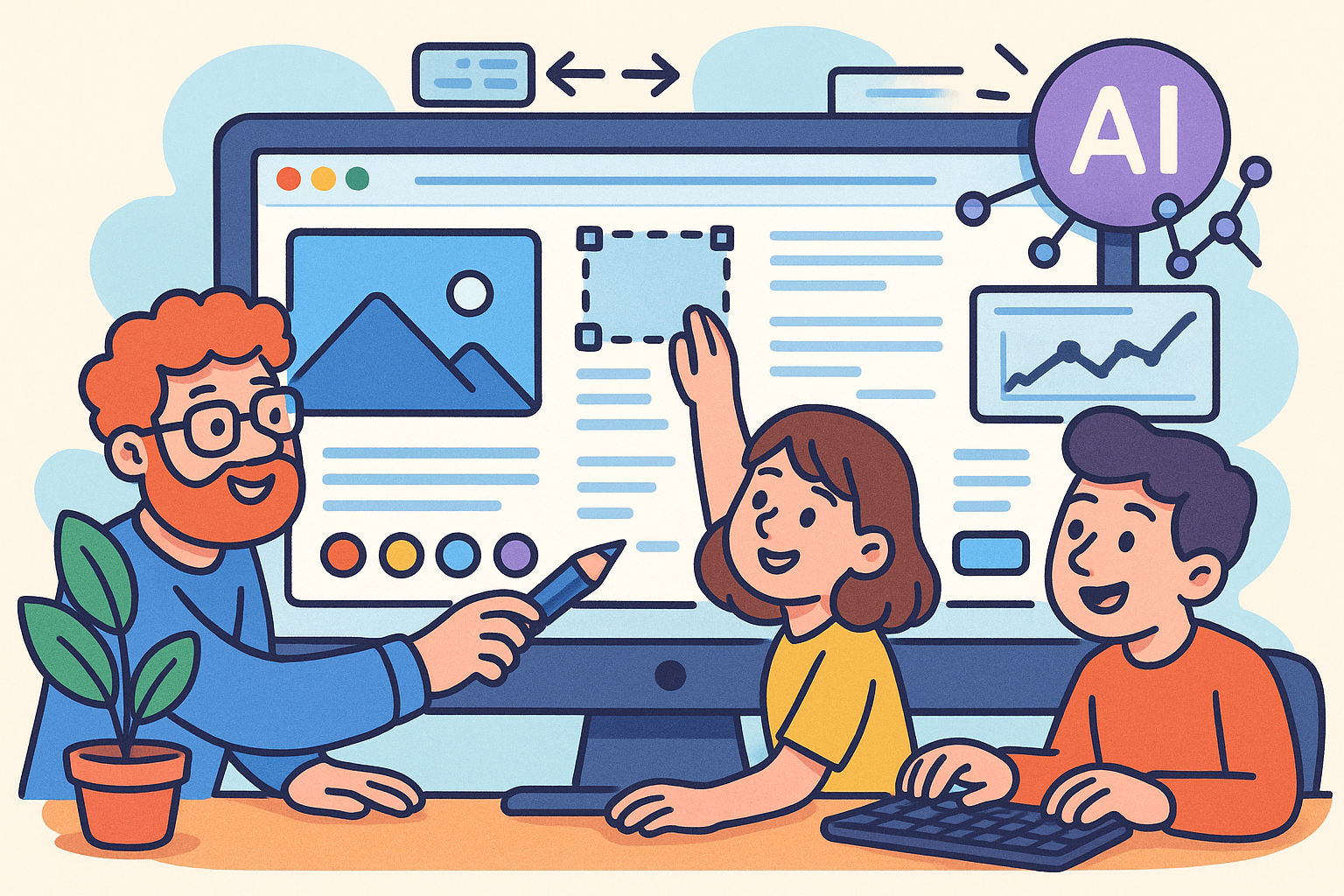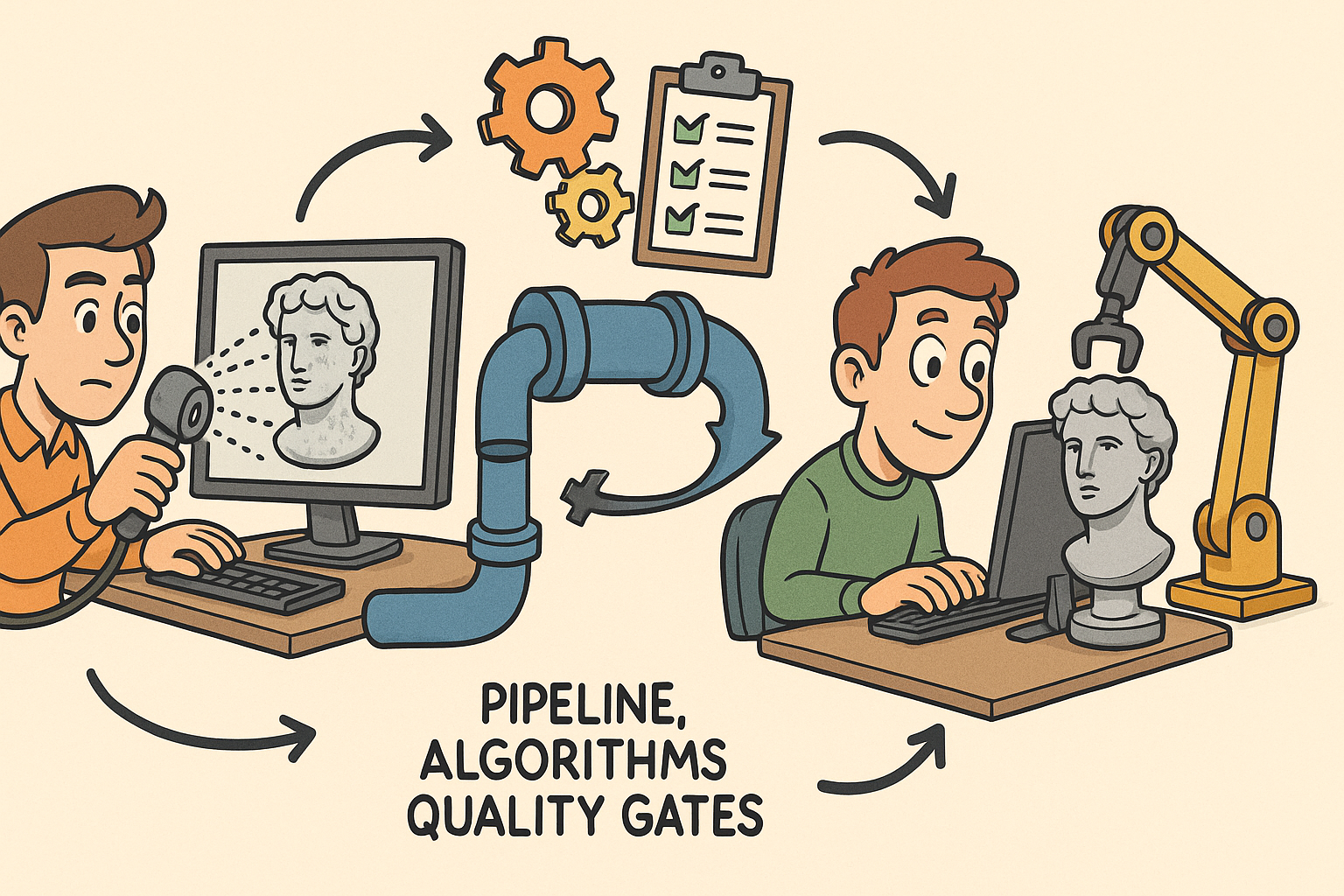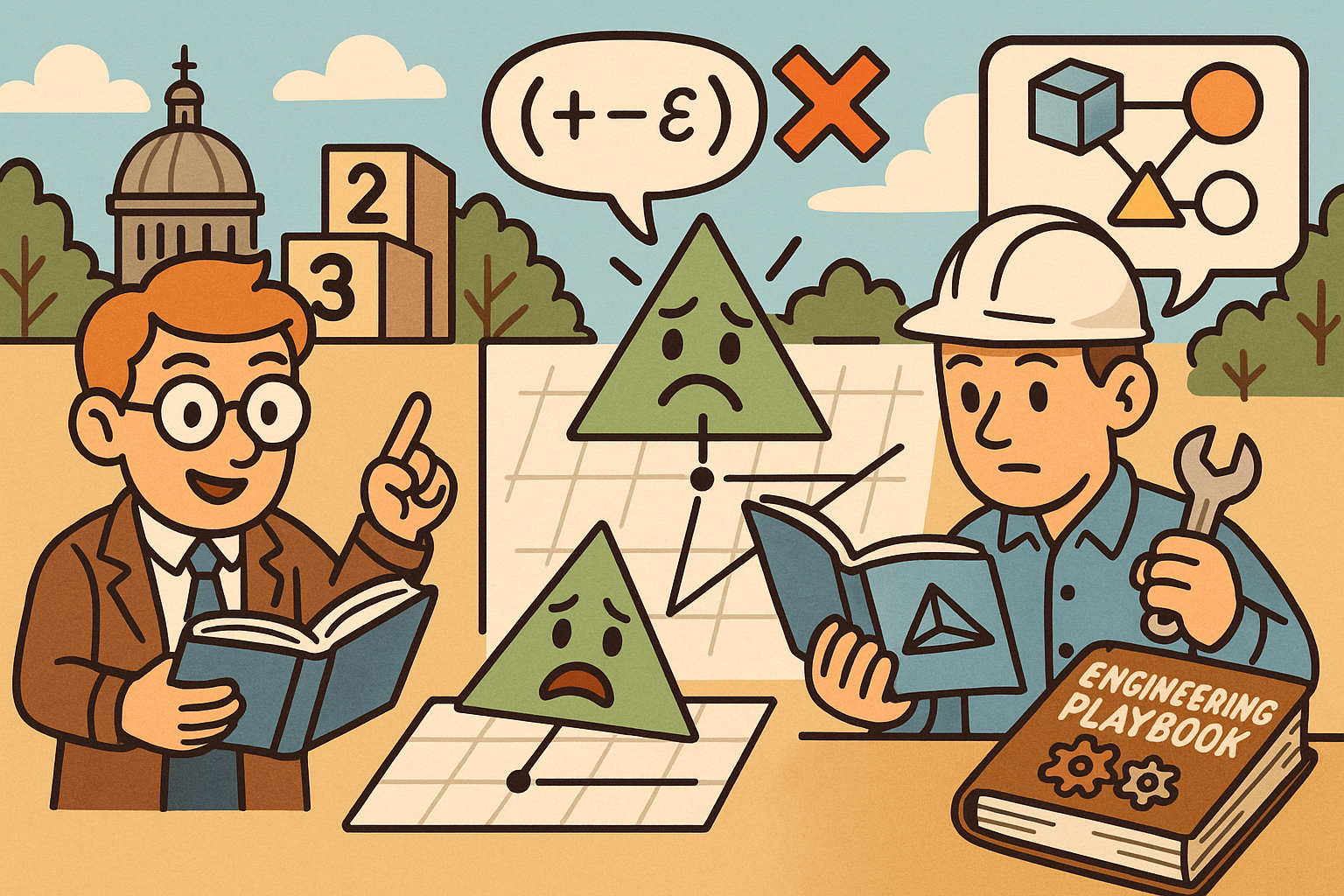Your Cart is Empty
Customer Testimonials
-
"Great customer service. The folks at Novedge were super helpful in navigating a somewhat complicated order including software upgrades and serial numbers in various stages of inactivity. They were friendly and helpful throughout the process.."
Ruben Ruckmark
"Quick & very helpful. We have been using Novedge for years and are very happy with their quick service when we need to make a purchase and excellent support resolving any issues."
Will Woodson
"Scott is the best. He reminds me about subscriptions dates, guides me in the correct direction for updates. He always responds promptly to me. He is literally the reason I continue to work with Novedge and will do so in the future."
Edward Mchugh
"Calvin Lok is “the man”. After my purchase of Sketchup 2021, he called me and provided step-by-step instructions to ease me through difficulties I was having with the setup of my new software."
Mike Borzage
Advancing Collaborative Design: From Real-Time Editing to AI-Driven Insights
August 02, 2025 8 min read


Setting the Context of Collaborative Design Environments
In today’s digital landscape, the growing emphasis on **multi-user collaboration** has revolutionized the way design professionals work together across borders and time zones. The evolution from single-user desktop systems to integrated, networked platforms has been both transformative and essential. Historically, designers were limited by local resources and isolated working conditions; however, as industries have embraced globalization and remote work, the need for interfaces that support real-time feedback and seamless data exchange has become paramount. In modern design software, collaboration is not just an optional feature, but a central component that enhances creativity, speed, and accuracy. The transition to these advanced multi-user environments marks a significant shift in both workflow and technology—the increase in sophisticated computing power, cloud-based storage, and robust connectivity solutions has enabled rapid development and deployment of collaborative tools.
Historical Evolution and Its Impact
Over the span of several decades, design software underwent a dramatic transformation. Early computer-aided design (CAD) systems were primarily standalone applications that required users to work in isolation. As technology advanced, the introduction of networking capabilities spurred the creation of solutions that allowed multiple users to access, modify, and refine design projects simultaneously. This period of evolution set the stage for contemporary platforms that integrate **real-time multi-user editing** capabilities, advanced version control systems, and prompt synchronization features. These systems now support distributed teams by providing robust tools for tracking changes, managing revisions, and ensuring that every modification is recorded and attributable. The evolution was driven by a convergence of technological innovation, market demands, and a global shift towards remote work environments.
Driving Forces Behind Collaborative Design Trends
Several driving forces have accelerated the adoption of collaborative design approaches across industries. Globalization has enabled teams to span continents, promoting a work culture where diverse expertise converges on high-stakes projects. In parallel, the rise of remote work—further accelerated by recent global events—has necessitated the development of software that supports distributed teams effectively. Designers now benefit from real-time communication tools that allow them to engage in direct dialogue as they iterate on complex projects. Among these, the introduction of **cloud-based storage** and **real-time feedback** mechanisms have been seminal, ensuring that updates are immediately available to all team members regardless of physical location. Moreover, the seamless integration of chat, voice, and video tools alongside annotation features has made it possible to iron out discrepancies on the fly. This array of tools, coupled with bulletproof version control systems, positions modern collaborative design software as an essential asset for innovative and efficient workflows.
Key Features Enhancing Collaborative Design Software
The foundation of advanced collaborative platforms lies in several key features engineered to support dynamic group work. Among these, **real-time multi-user editing** stands out as a major innovation. This feature empowers design teams to work on a single project simultaneously, minimizing delays and mitigating the risks of conflicting changes. Integrated version control systems meticulously track revisions, enabling designers to pinpoint discrepancies and manage conflicts as soon as they arise. Such systems ensure that every alteration is documented, facilitating both accountability and seamless backtracking if necessary. Alongside these core functionalities, robust integrated communication tools have been embedded within many design platforms. These tools span a spectrum of mediums—including chat, voice calls, video conferencing, and on-screen annotations—designed to mediate and streamline communication among team members working in disparate locations.
Real-Time Editing and Version Control
Real-time editing functionalities allow for the simultaneous contribution of ideas, ensuring that every member of a team is on the same page—both literally and figuratively. Advanced version control mechanisms have become indispensable for the management of dynamic design files. They monitor changes meticulously, making it simple to identify and resolve discrepancies in large-scale projects. Some of the benefits and features of these systems include:
- Immediate feedback: Designers can view changes in real time, reducing the time spent waiting for updates.
- Conflict resolution: Automated tools help identify and reconcile conflicting edits, minimizing workflow disruptions.
- Revision history: Comprehensive archives of changes ensure that every version is retrievable for review or rollback.
- Audit trails: Detailed logs facilitate an understanding of who made which changes and when.
Integrated Communication and Cloud-Based Frameworks
Another critical dimension of collaborative design software is the integration of comprehensive communication tools. By embedding chat, voice, video, and annotation capabilities directly into the design environment, platforms eliminate the need for external applications, ensuring that conversations remain contextual and efficient. Moreover, the adoption of **cloud-based storage** mechanisms has further streamlined collaborative efforts. These systems not only support seamless updates and automatic backup protocols, but they also facilitate data synchronization across widely distributed teams. Key benefits include:
- Seamless integration: Communication tools are embedded directly within the design platform, providing real-time context to every discussion.
- Cloud synchronization: Data stored in the cloud is readily accessible by all team members, ensuring that everyone has the latest version.
- Backup and recovery: Regular and automated backups protect against data loss and promote peace of mind among users.
- Synchronized workflows: Updates to design files are pushed immediately across the network, ensuring coherence in collaborative efforts.
Best Practices and Strategies to Maximize Collaborative Output
Maximizing the benefits of collaborative design software involves a strategic blend of robust system architecture and clear workflow protocols. One of the most critical components of this paradigm is the optimization of system infrastructure to support high performance in multi-user environments. By taking into account network considerations and proactively minimizing latency, design organizations can ensure that their teams experience smooth, uninterrupted workflows. **Optimizing system architecture** is not just a technical challenge—it is a strategic imperative that contributes significantly to overall productivity. For instance, ensuring that servers are geographically distributed and leveraging content delivery networks (CDNs) can dramatically improve response times. Additionally, organizations should prioritize redundant networking solutions to mitigate risks of downtime or performance bottlenecks.
Network Considerations and System Architecture
The efficacy of any collaborative platform starts with its underlying network infrastructure. Establishing low-latency connections is crucial for real-time editing and communication, and therefore requires careful selection of hardware and efficient routing protocols. Some best practices include:
- Geographical distribution: Setting up servers in multiple regions can reduce latency for globally dispersed teams.
- Redundant systems: Backup servers and failover protocols ensure continuity in the event of a network failure.
- Efficient routing: Optimized content delivery networks facilitate faster data transfer and reduce lag in user interactions.
- Scalability: The architecture should be scalable, with modular components that can be updated or replaced without disrupting the entire system.
Workflow Protocols and Integration Strategies
In addition to technical optimizations, establishing clear workflow protocols is paramount. These protocols provide structure by defining roles, permissions, and access levels within design systems. For example, delineating responsibilities among team members ensures that every participant knows who can make changes or approve revisions. Moreover, integrating supplementary tools such as task managers and project trackers can help maintain data consistency and enable efficient project oversight. Key strategies include:
- Role assignments: Clearly defined roles ensure accountability and streamline decision-making processes.
- Access control: Granular permission settings prevent unauthorized modifications while allowing collaboration.
- Supplementary tool integration: Seamless integration with project management systems fosters a unified workflow.
- Data consistency protocols: Standards for data entry and revision ensure that every contribution is systematically verified.
Future Trends, Challenges, and Conclusion
As design software continues to evolve, several exciting trends are emerging that promise to redefine the landscape of multi-user collaboration. Among these, **AI-driven insights** and augmented reality interfaces are at the forefront of innovation. These technologies stand to transform not only how designers interact with their tools but also how they perceive and implement solutions in a digital workspace. Artificial intelligence is being leveraged to analyze design patterns, predict potential areas of conflict, and propose optimizations, thereby streamlining workflows and enhancing overall design quality. Augmented reality interfaces, on the other hand, offer immersive experiences that can transform the way designers visualize projects in three dimensions, leading to more intuitive and interactive design processes.
Emerging Technologies and Their Impact
Looking ahead, disruptive technologies such as blockchain security and advanced cloud computing frameworks are expected to play a significant role in the next generation of collaborative design software. Blockchain, for instance, offers robust security protocols that ensure the integrity of design data and protect against unauthorized alterations. AI-driven insights are already helping teams by providing predictive analytics and automating routine tasks, which can lead to more informed decision-making. Emerging augmented reality (AR) applications will soon provide extensive visualization capabilities, empowering designers to interact with their projects in novel ways. Key emerging trends include:
- AI-Driven Insights: Automation of repetitive tasks and the provision of actionable design recommendations.
- Augmented Reality Interfaces: Enhanced visualization that helps teams better understand spatial relationships and design nuances.
- Blockchain Security: Immutable records and secure data transfer protocols that protect intellectual property.
- Cloud Innovations: Next-generation storage and processing architectures that ensure scalability and reliability.
Addressing Challenges and Embracing Continuous Innovation
Despite the significant benefits and exciting possibilities, challenges remain that could impede the seamless adoption of advanced collaborative design platforms. Scalability stands as one of the primary concerns, as the ever-increasing volume of design data demands robust storage and processing capabilities. Additionally, data management becomes increasingly complex as teams grow and projects become more intricate. User training is also crucial; as new technologies emerge, ensuring that every team member is proficient in using the latest interfaces, from cloud-based tools to AI-enhanced features, is a significant but necessary investment. Strategies to address these challenges include developing continuous learning programs, ensuring regular system updates, and fostering an adaptive work culture that welcomes technological change. Furthermore, organizations can implement periodic audits to identify and resolve bottlenecks in data synchronization and user access protocols. Embracing continuous innovation is not solely a technical pursuit—it is also a commitment to refining workflows and establishing best practices that empower teams to leverage cutting-edge tools effectively.
In conclusion, the integration of collaborative features within design software has reshaped the landscape of professional design and engineering. The benefits of features such as **real-time multi-user editing**, integrated communication tools, and cloud-based systems have enabled teams to work more efficiently, reduce errors, and unlock greater creative potential. With emerging technologies pushing the boundaries of what is possible—from **AI-driven insights** to augmented reality interfaces—design professionals are poised to redefine their workflows and embrace new paradigms of innovation. As organizations continue to address challenges related to scalability, data management, and user training, the future of multi-user design environments remains promising. It is clear that leveraging these advanced collaborative features is key to boosting productivity, ensuring data integrity, and fostering a creative culture that is ready to tackle the complex demands of tomorrow’s design challenges.
Also in Design News

From Raw Scans to Manufacture-Ready Geometry: Pipeline, Algorithms, and Quality Gates
December 08, 2025 13 min read
Read More
Design Software History: Numerical Robustness in Geometry Kernels: History, Failure Modes, and Engineering Playbook
December 08, 2025 13 min read
Read More
Cinema 4D Tip: Reusable Cinema 4D Camera Rig Presets for Faster Shot Setup
December 08, 2025 2 min read
Read MoreSubscribe
Sign up to get the latest on sales, new releases and more …


